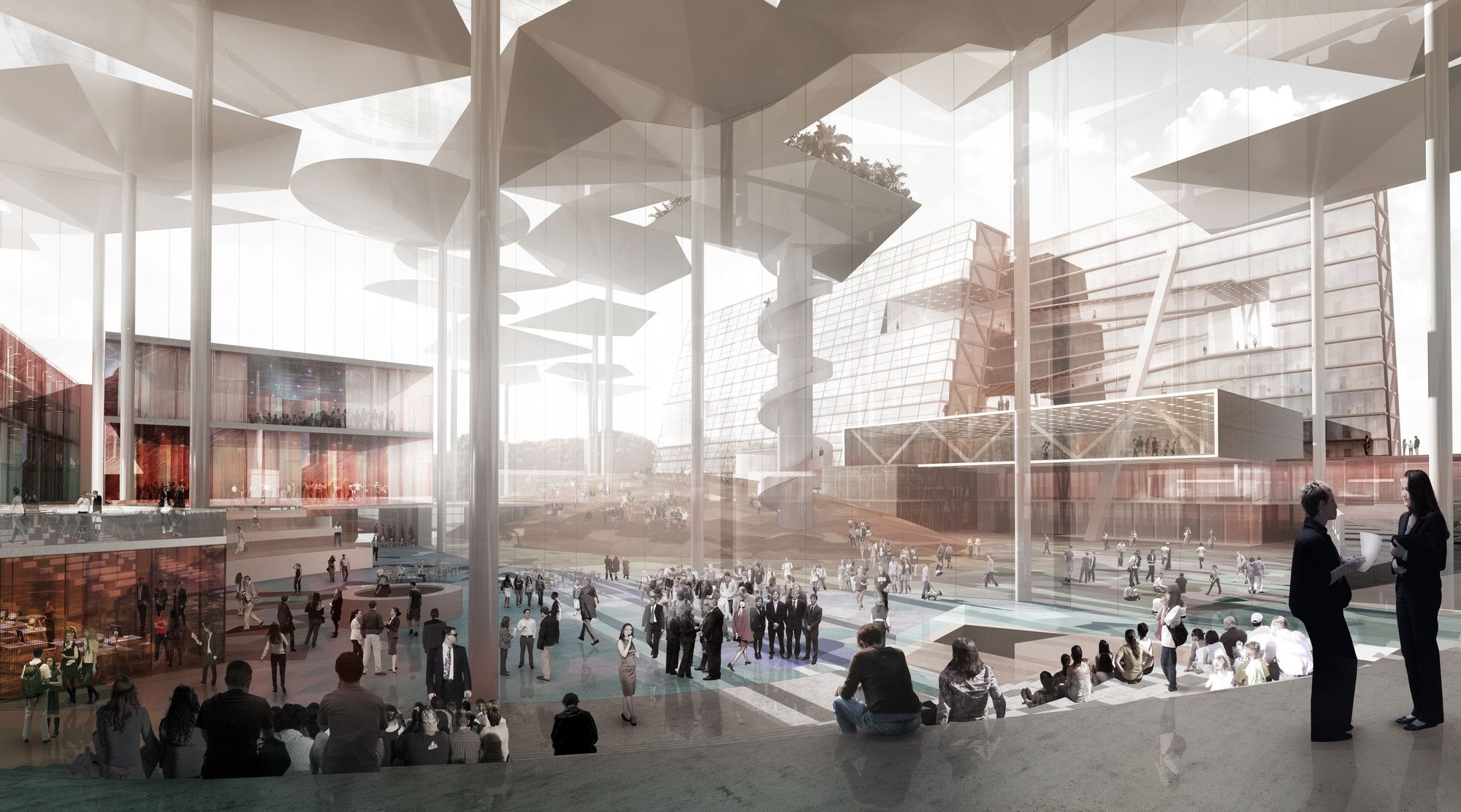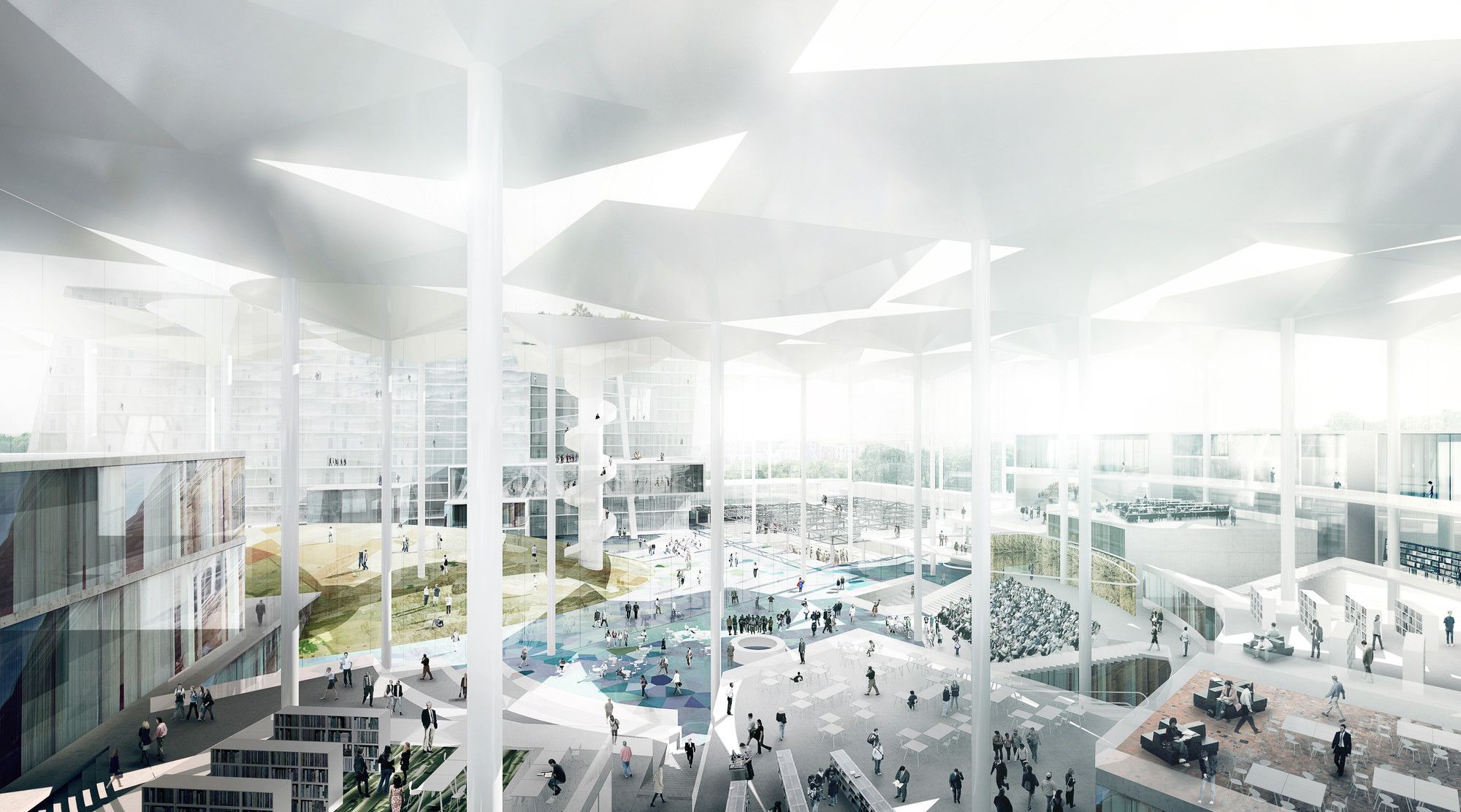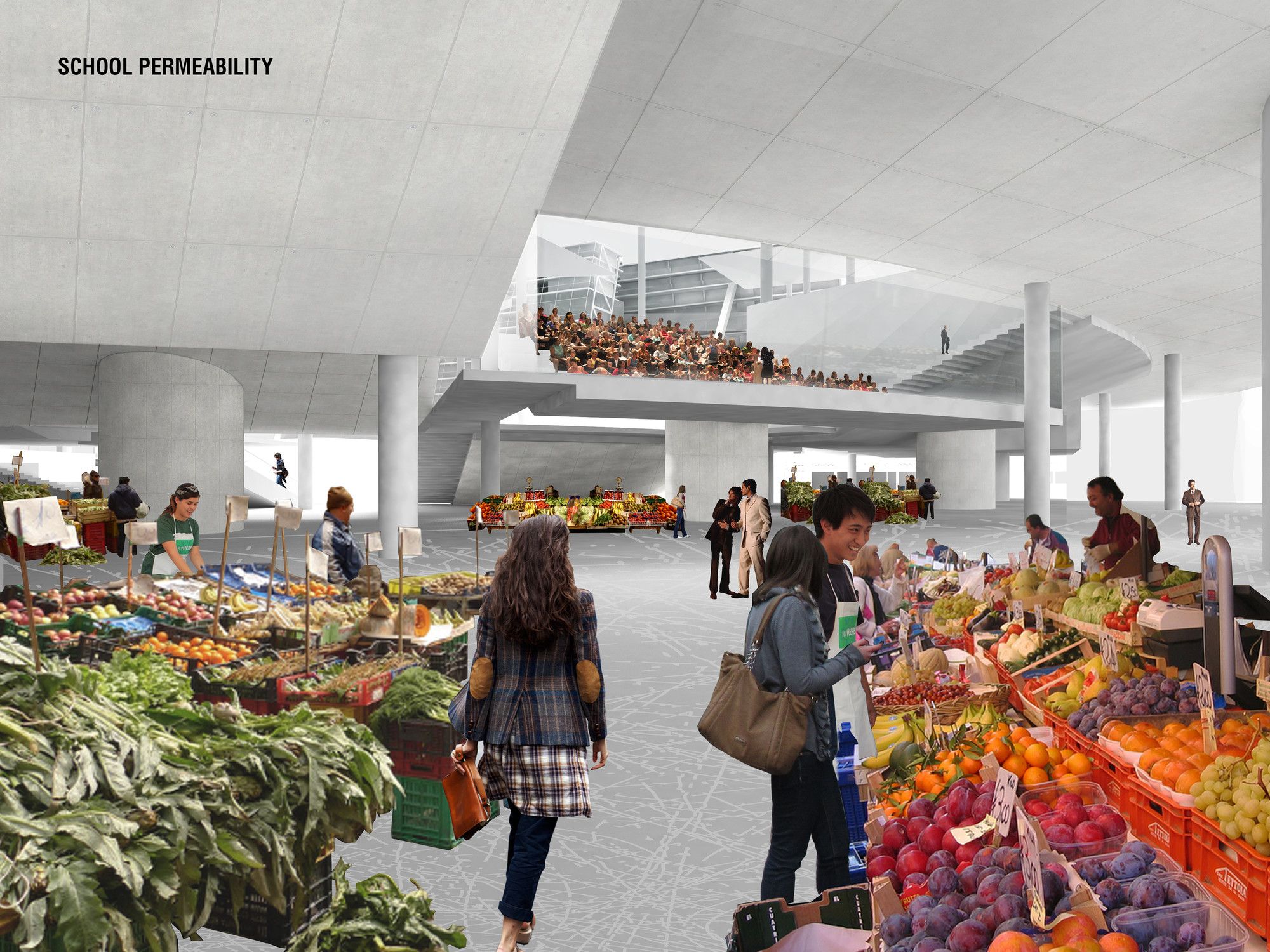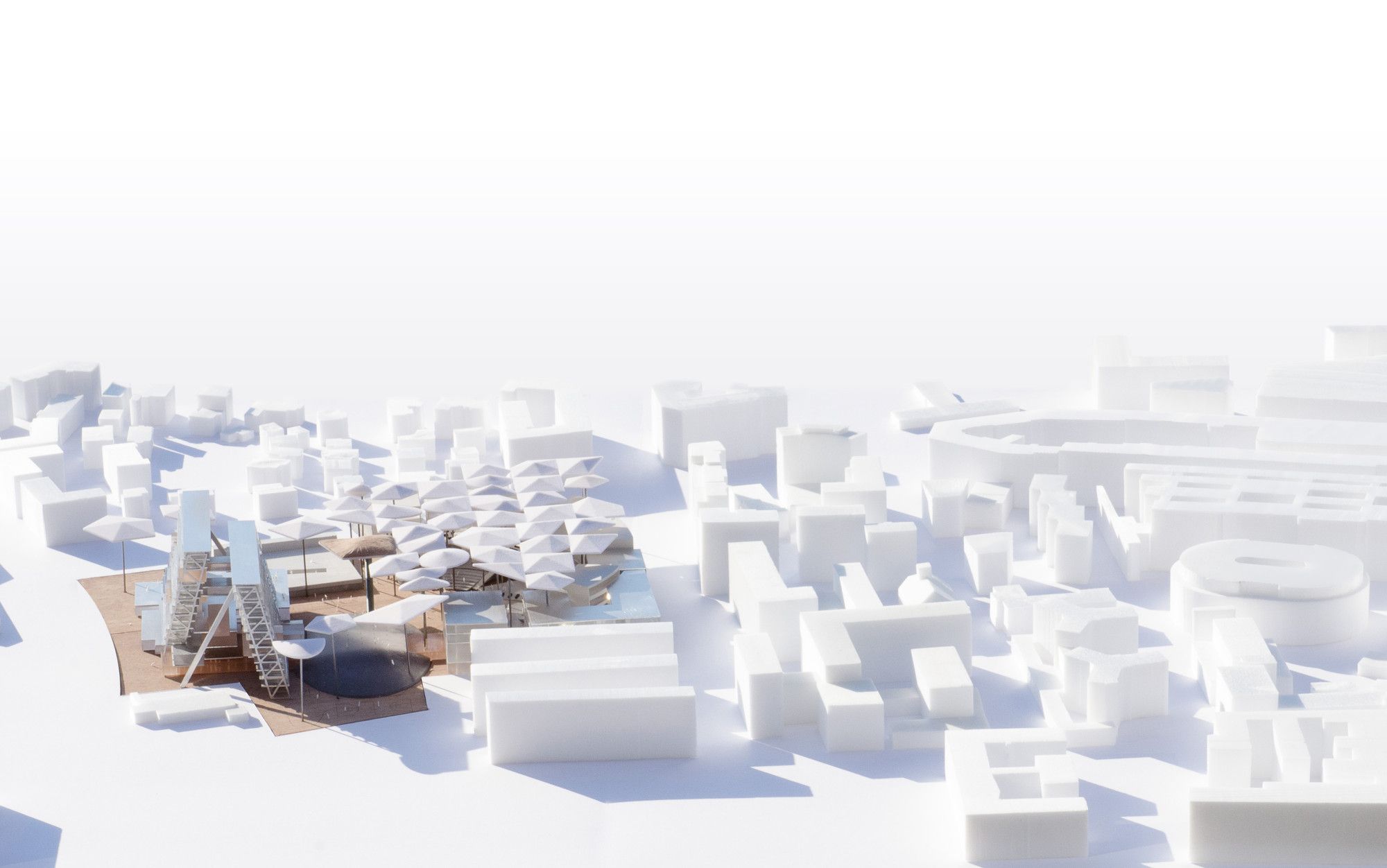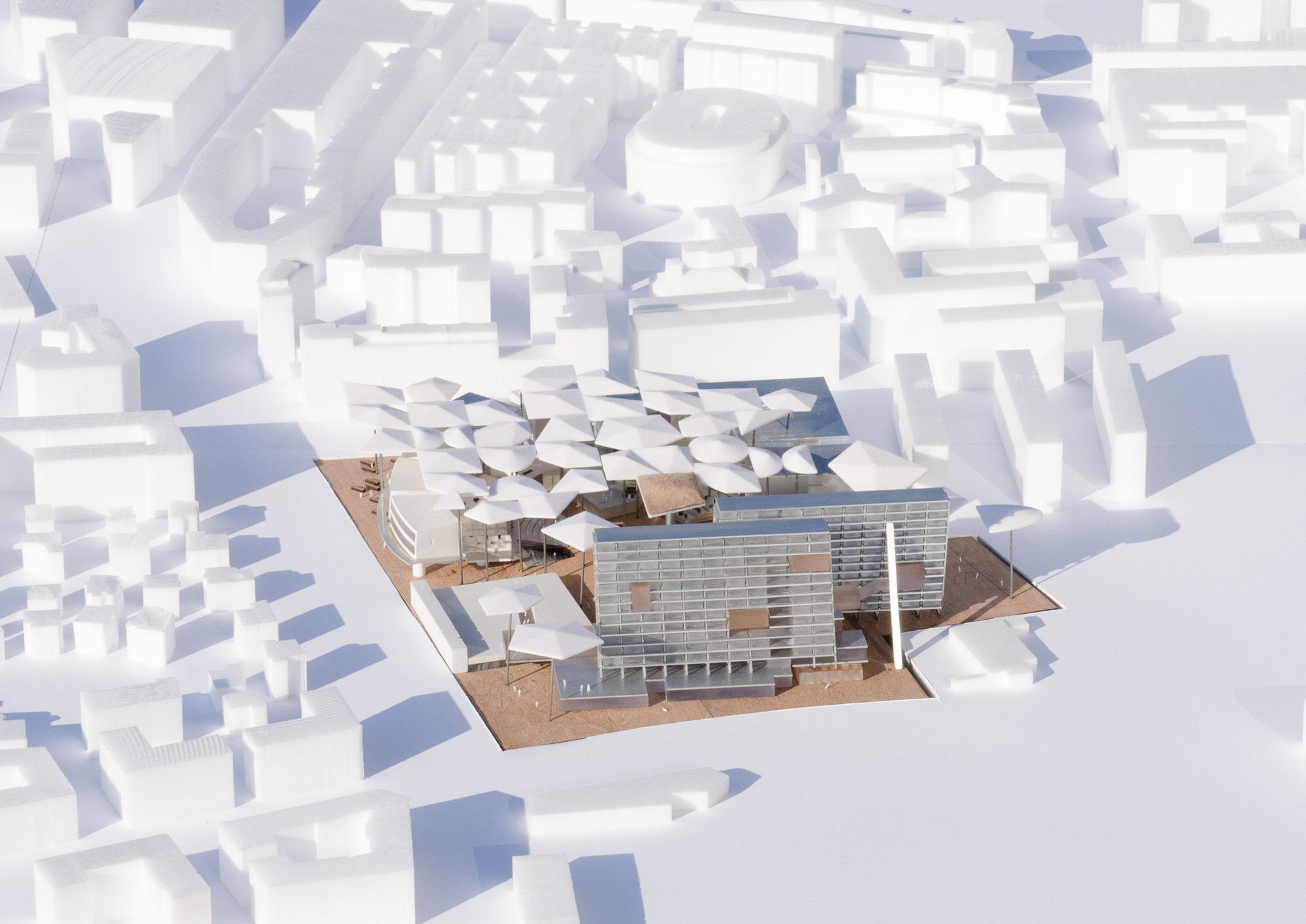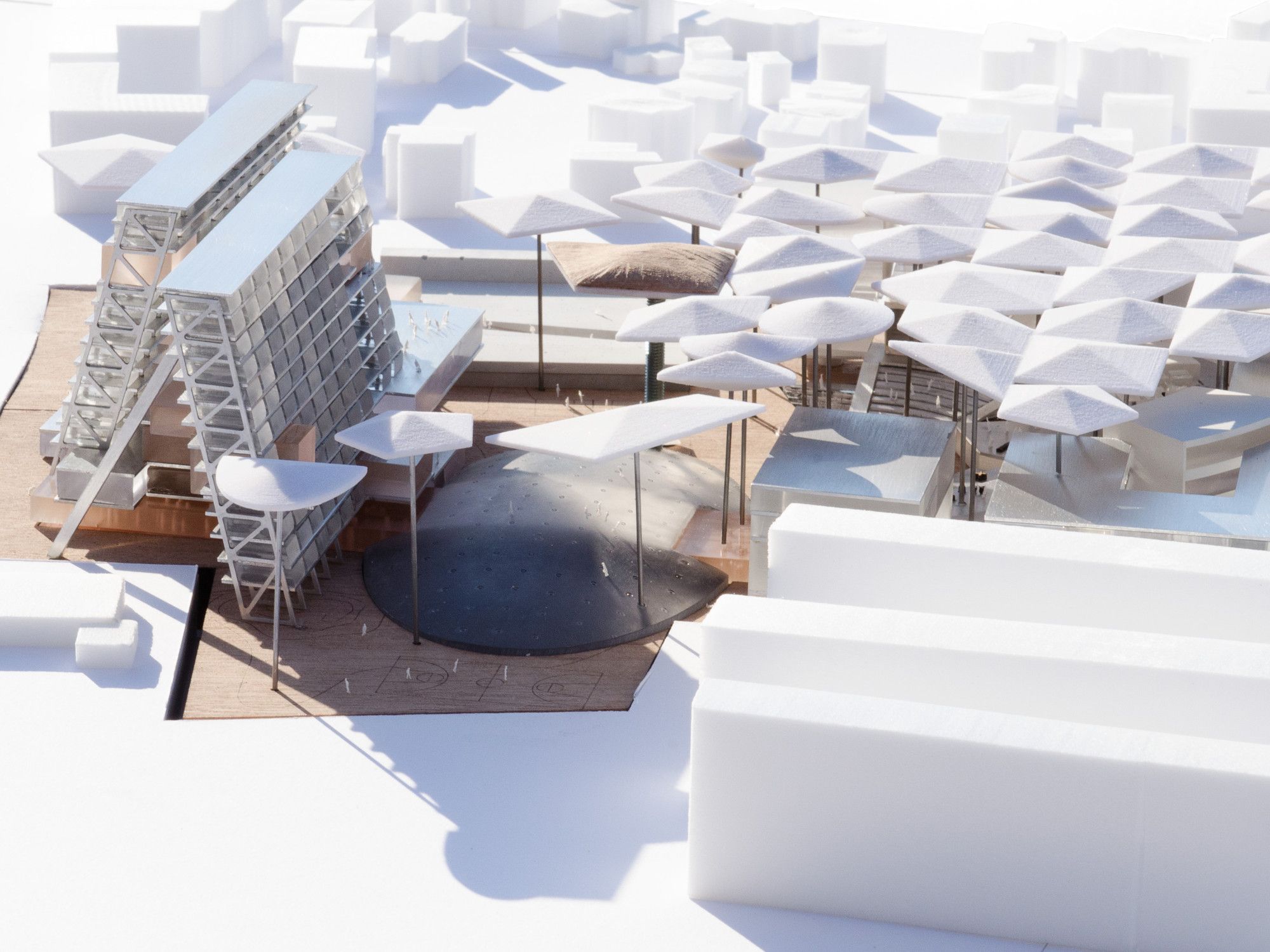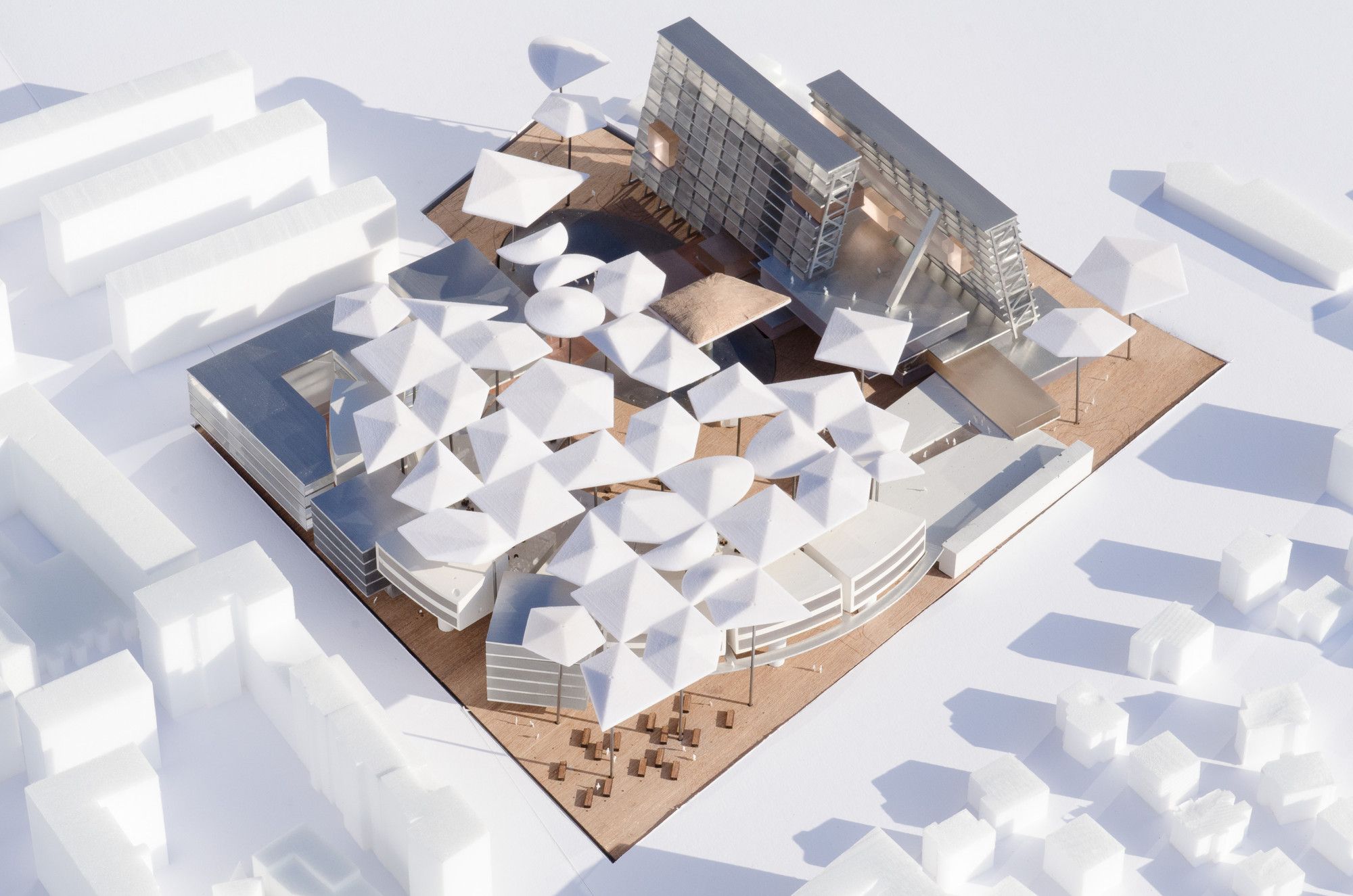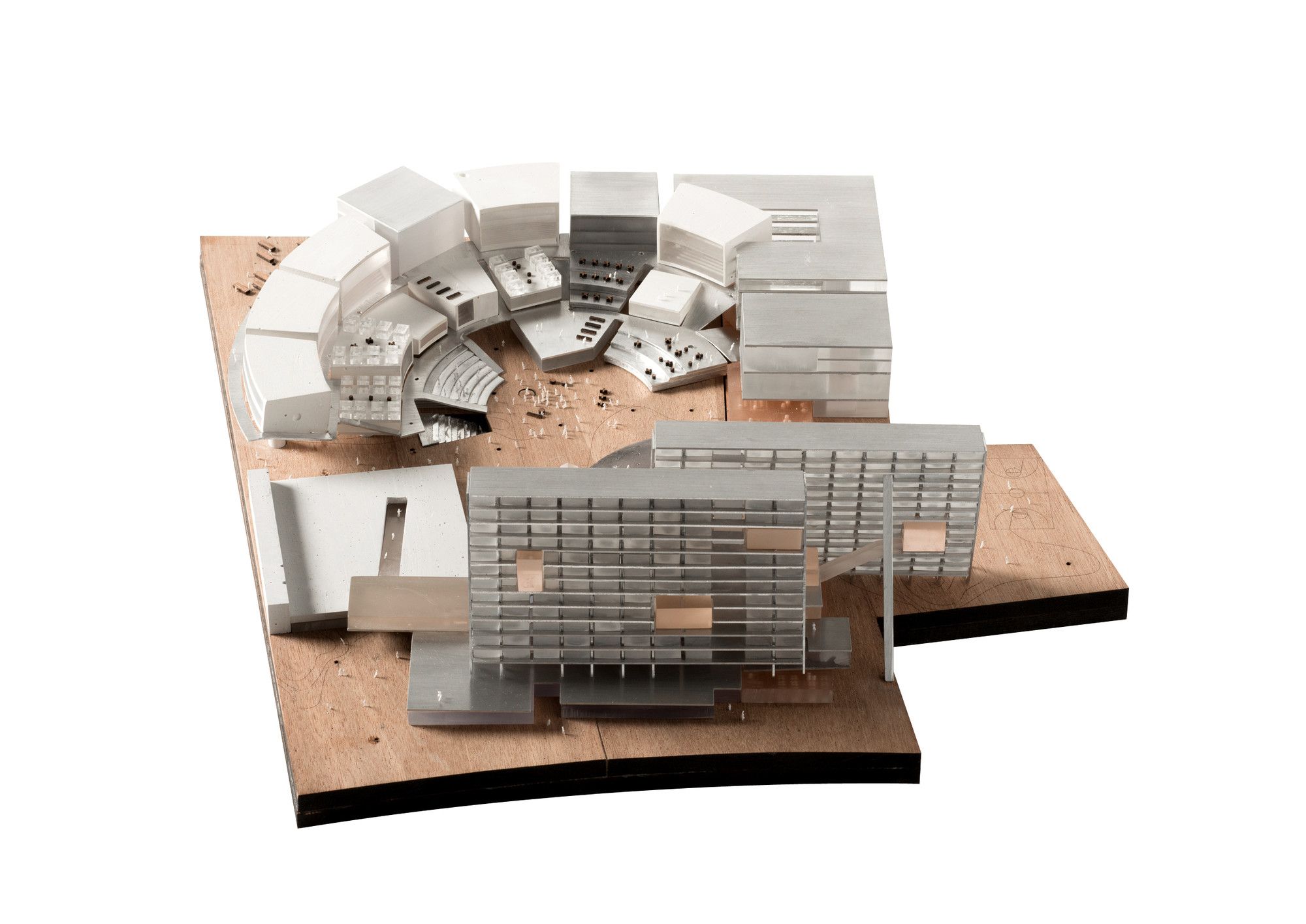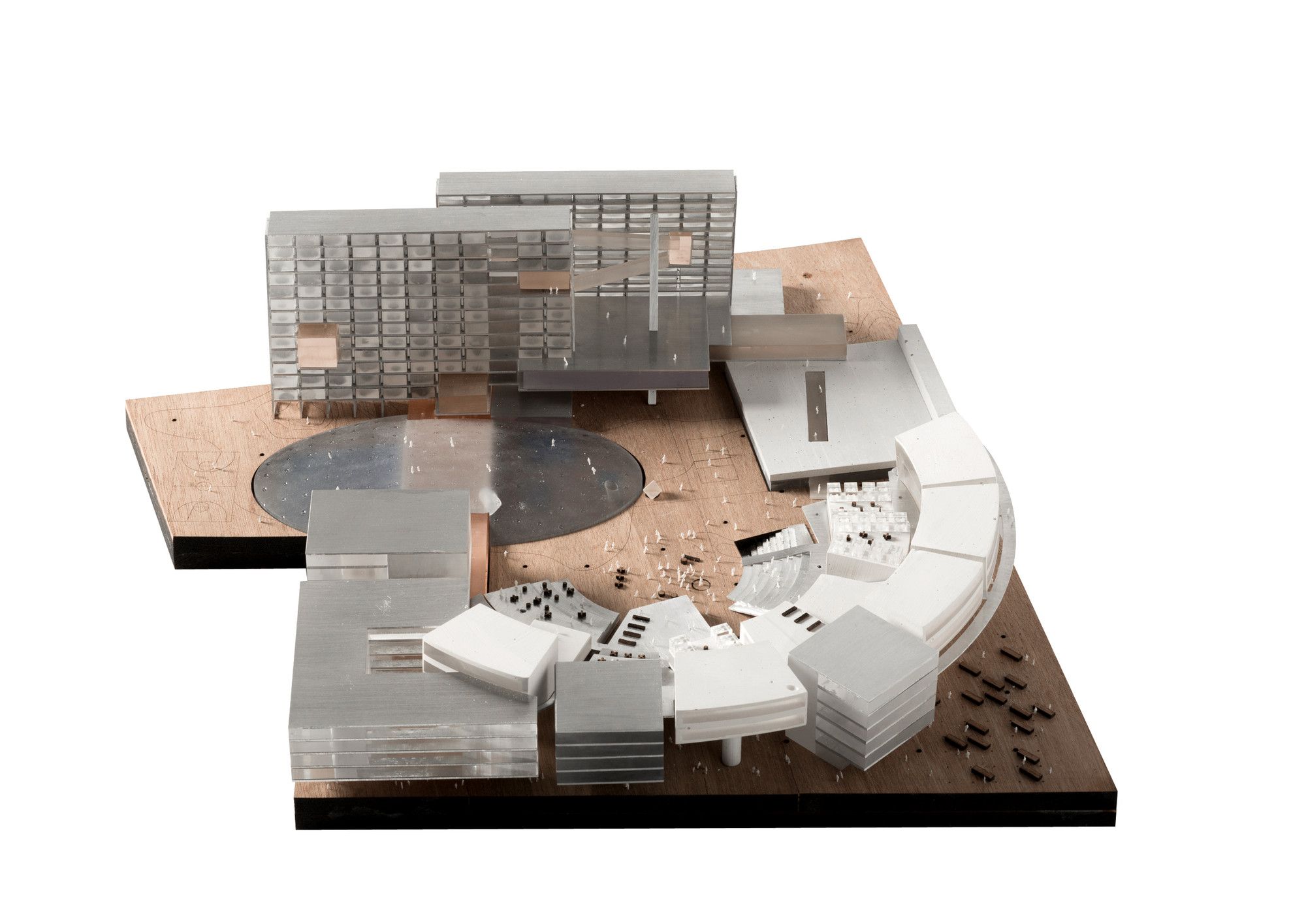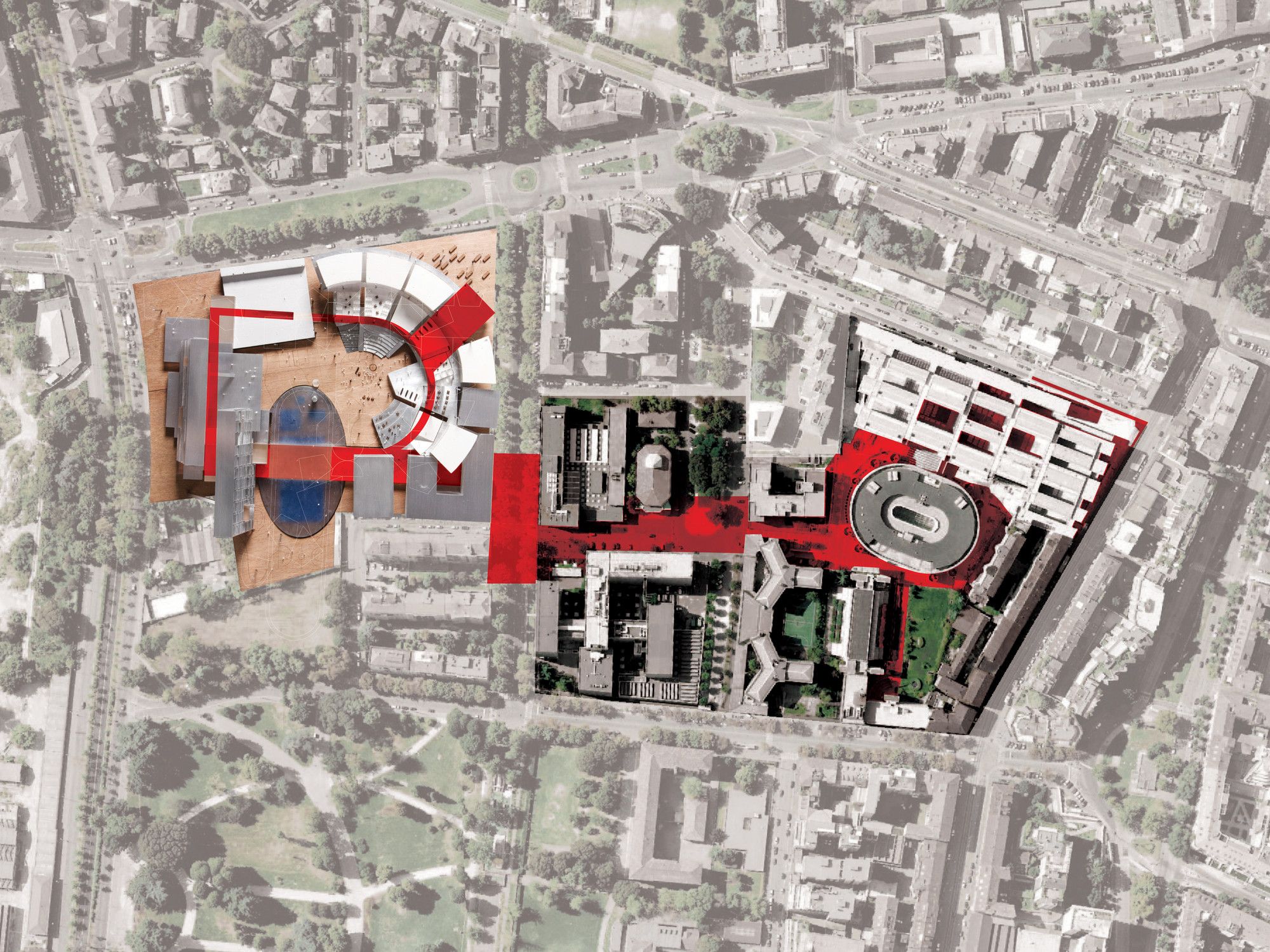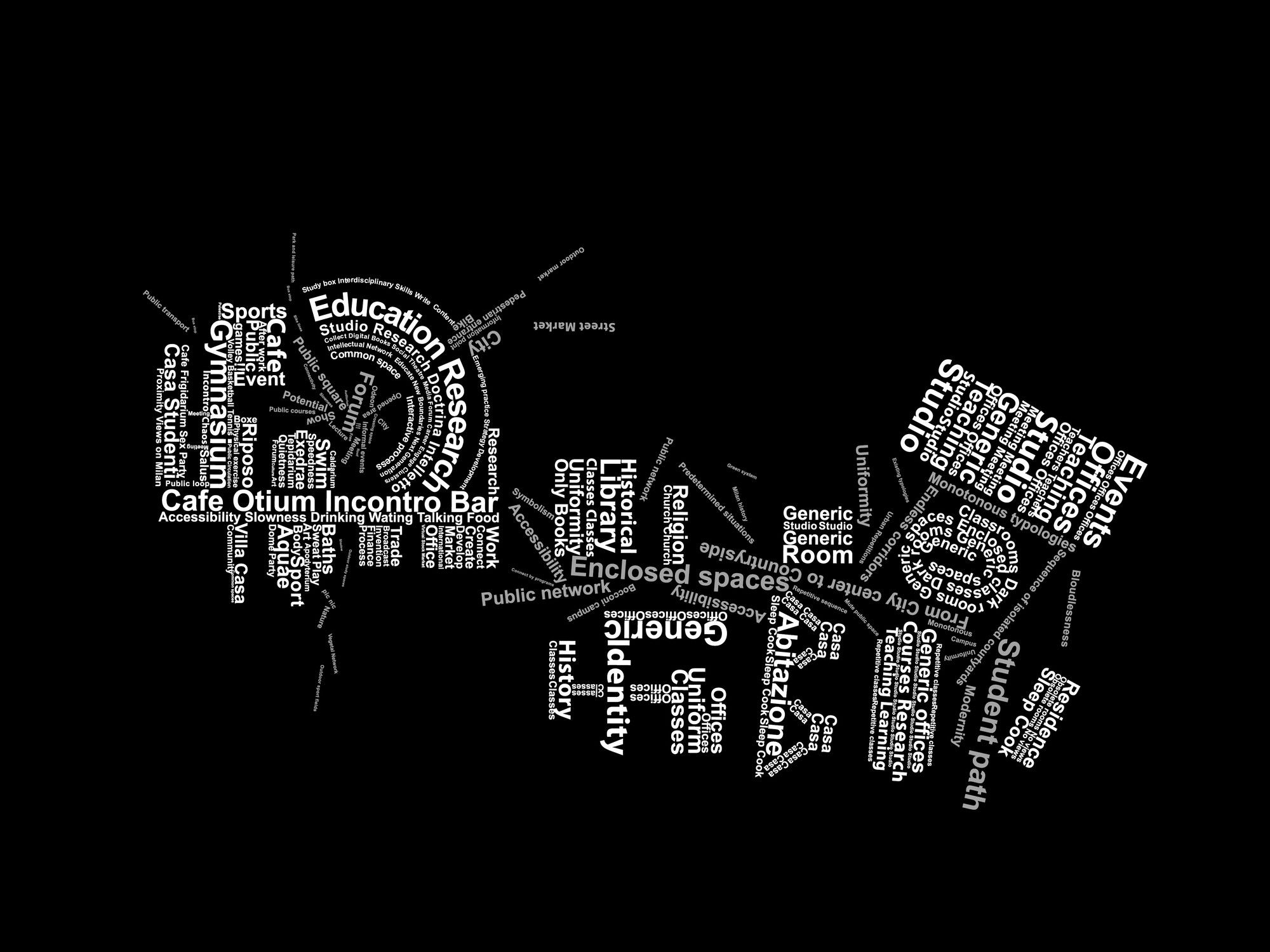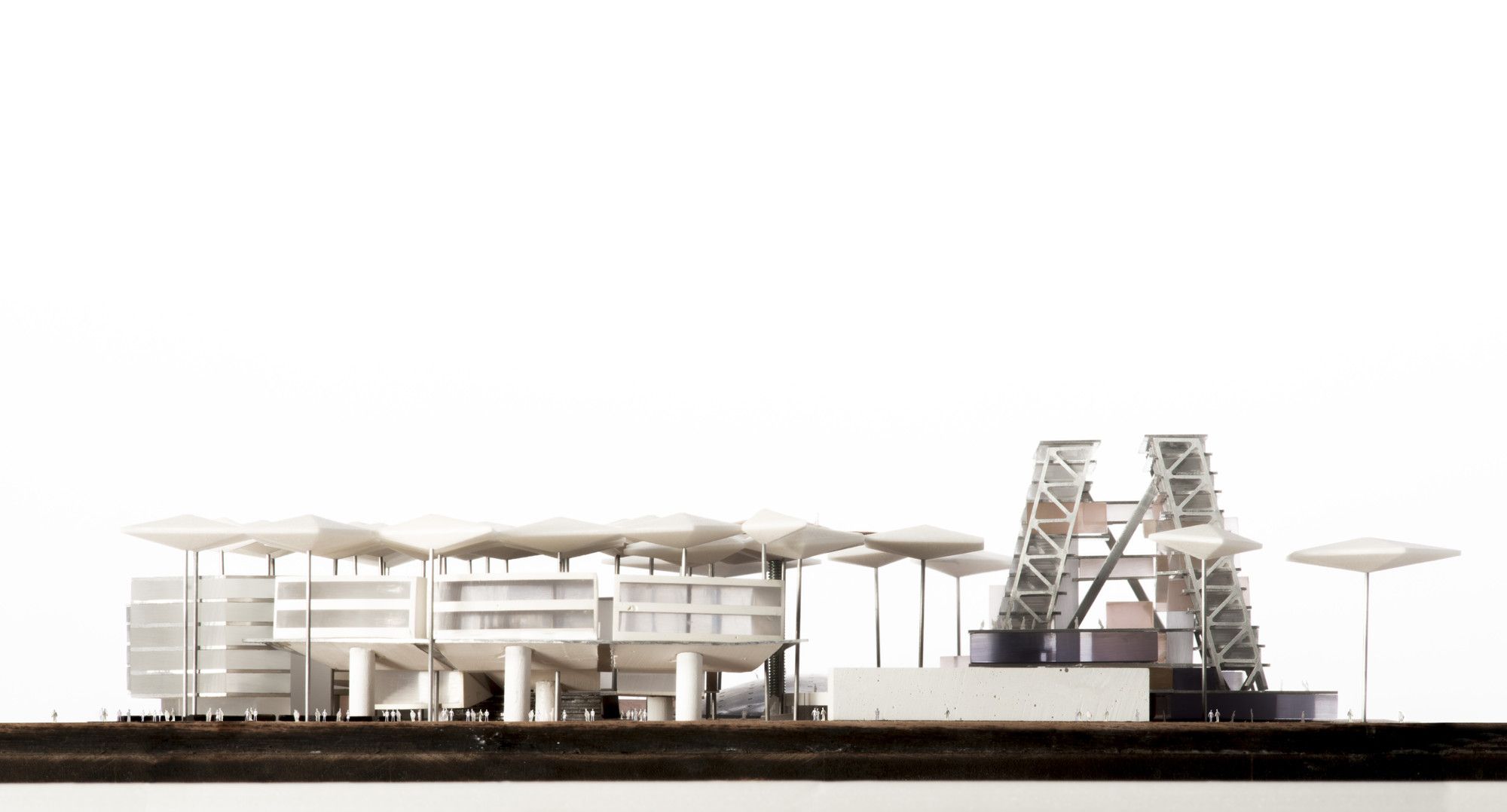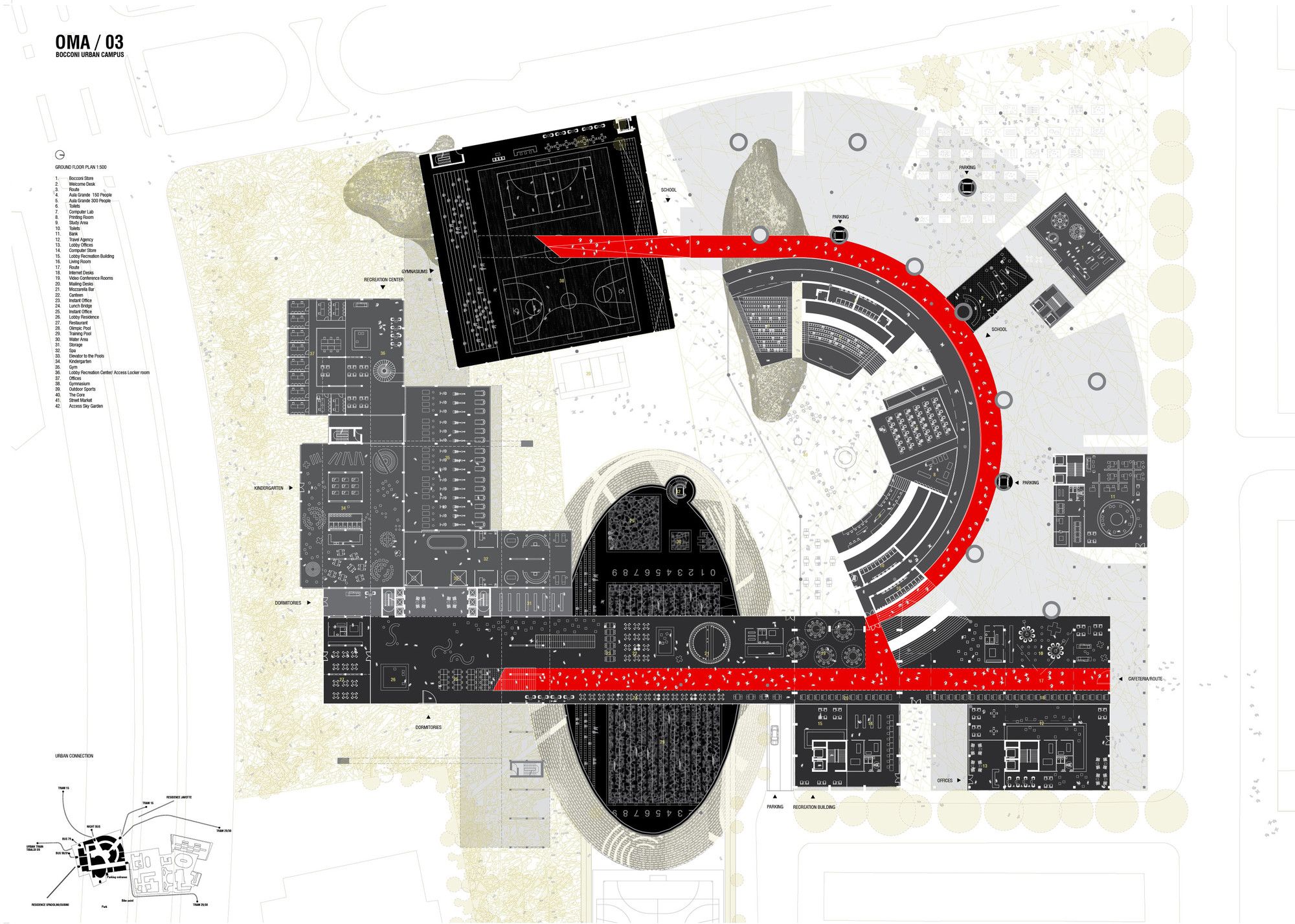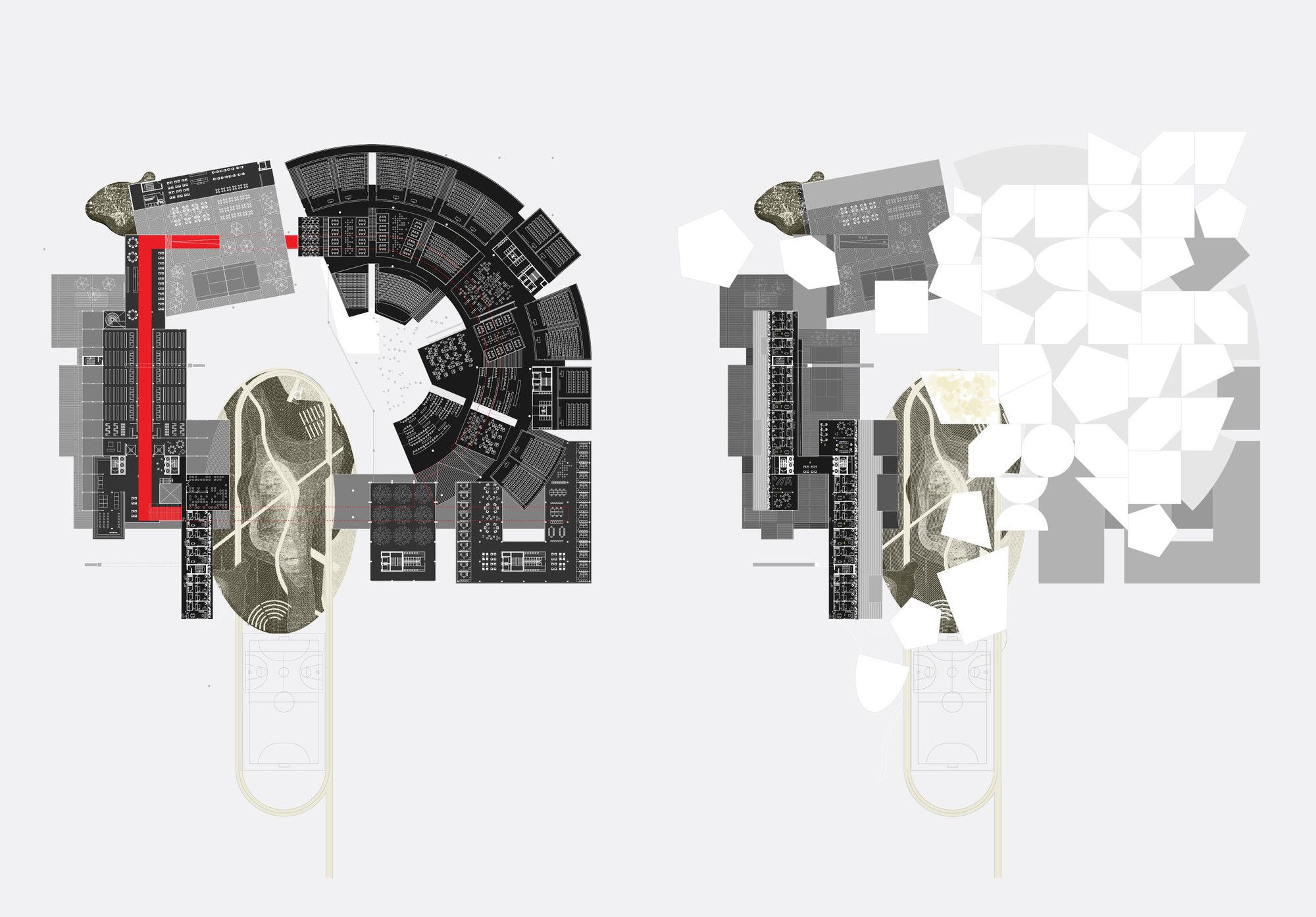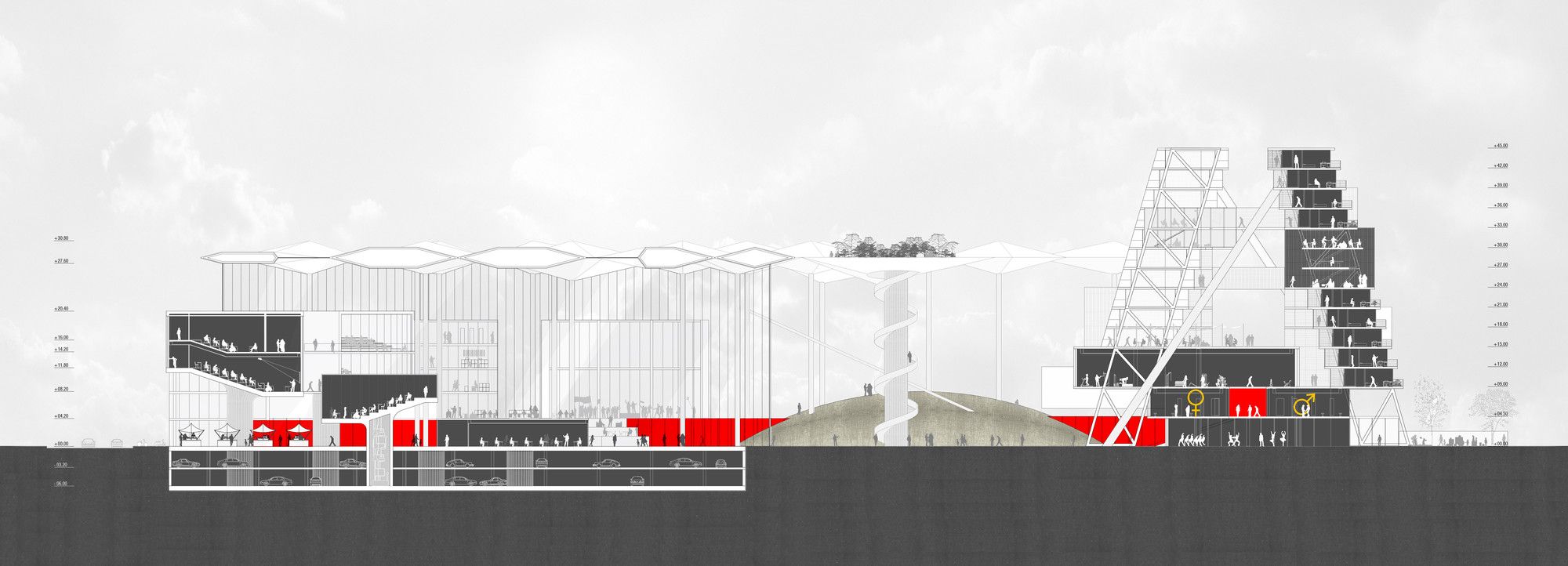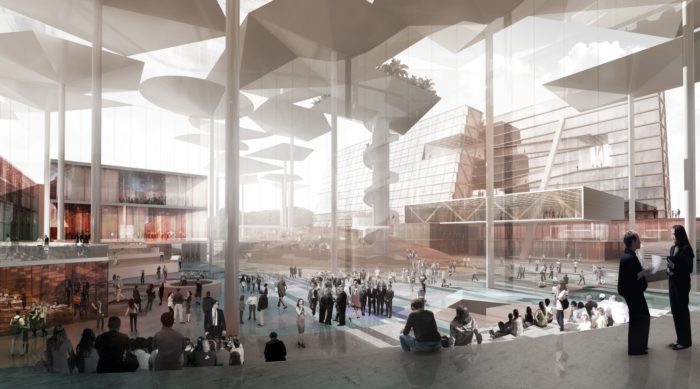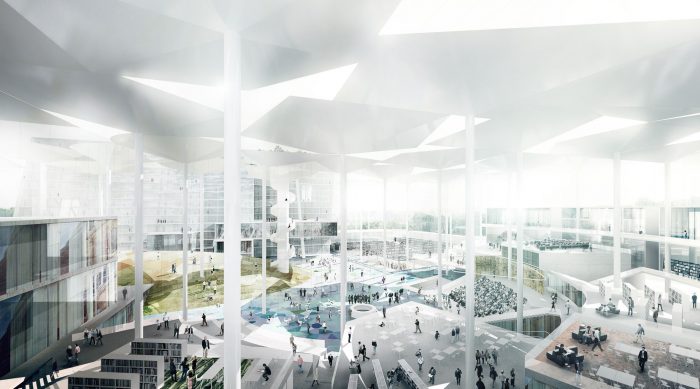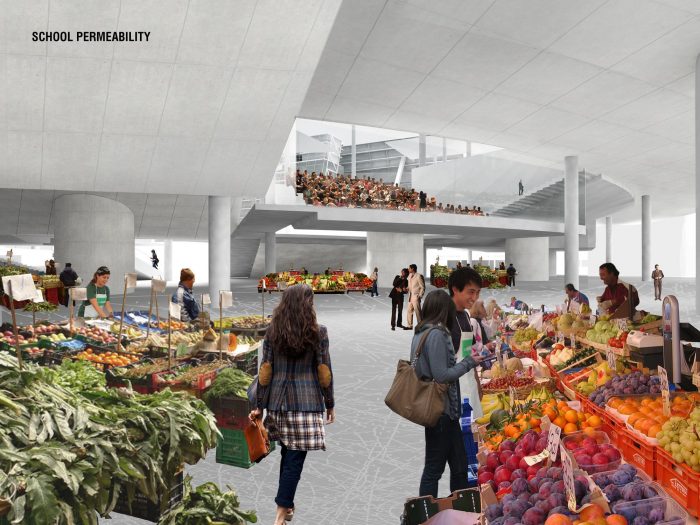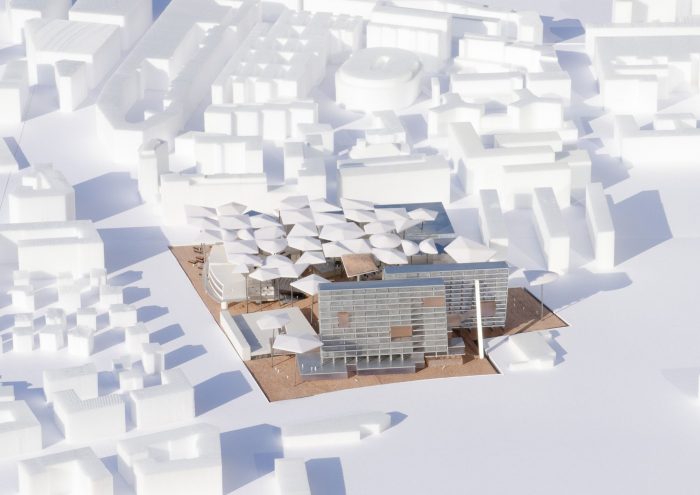Bocconi Urban Campus
Bocconi University in Milan challenged architects world-wide to design a ‘campus for the third millennium’. Although SANAA’s courtyard-centric complex formed by a series of undulating figures won the first place, OMA’s proposal provides an interesting twist to intercity university campuses.
“What is the most appropriate stage for Homo Economicus?” A question that OMA answered by formulating a composition of objects that “represent a three-dimensional re-learning of humanistic values“, a proposal that sets the stage for Homo Economicus.
“In the middle of still ongoing turmoil, we propose a formal composition of objects that represent a three dimensional re-learning of humanistic values. We arrange a multiplicity of structures and programs in such a way that, beyond a direct response to Bocconi’s immediate needs, we also address the less explicit questions raised by its current situation. As a counterpart to Bocconi’s severe architecture, our project offers a degree of complexity. Vis-à-vis the old campus – a casual ensemble of more or less independent buildings – the new complex is conceived as a core, where two clusters of interdependent buildings, one introverted and the second extroverted, around an open center, form a larger whole”, states OMA.
The proposal included two clusters of independent buildings – an ‘extroverted’ new school of management and the ‘introverted’ A-frame student housing tower – are centered around a public amphitheater topped by a canopy of ‘architectural’ umbrellas covering the social space between them. The thirteen story tower shelters the more intimate campus programs and acts as a backdrop to the boisterous new school, all spaces remain permeable to the activities of the surrounding city and establish the most appropriate and stimulating connection.
OMA described the proposal, “the lecture rooms and the general work spaces are arranged in a single amphitheater over which the life of the school can extend in all directions – it faces a second part: an A-frame of housing that protects the more intimate activities of the gymnasium. A major route connects to the old campus, becomes cafeteria, student lounge and workspace, bridges the pools, forms the entrance to the gymnasium and links the amphitheater through the sports arena. The entire complex is permeable for the activities of the surrounding city… each urban extension conceived to establish the most appropriate and stimulating connection“.
Project Information :
Architect : OMA
Location : Milan, Italy
Project Year : 2012
Project Area : 94.084 square meters
Partner in charge : Rem Koolhaas
Assosiete in charge : Ippolito Pestellini Laparelli
Team : Paul Cournet, Alice Gregoire, Ricardo Guedes, Barbara Materia, Francesco Moncada, Pietro Pagliaro, Silvia Sandor, Miguel Taborda
Structural Engineer : Buro Happold – Wolf Mangelsdorf
MEP and Sustainability : Buro Happold – Paolo Cresci
Local Architect : Studio Nonis – Fabio Nonis
Urban Planning : Laboratorio Permanente – Nicola Russi
